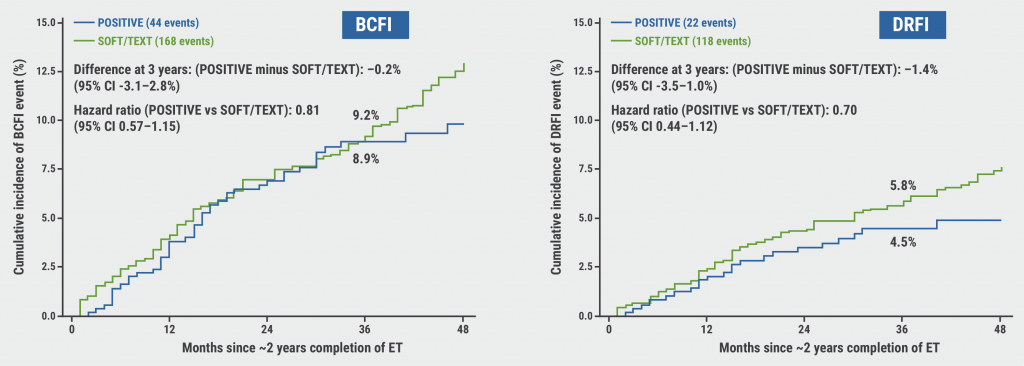"It is reassuring that the subgroup of HER2-low-positive tumors can be detected in central pathology datasets that were generated based on the American Society of Clinical Oncology/College of American Pathologists guidelines for evaluation of HER2 expression; nevertheless, additional standardization is needed before low HER2 expression can be used as a routine biomarker to select patients for further therapy options," they say in The Lancet Oncology.
"The results of our study, together with clinical trial data, suggest that the molecular landscape of breast cancer might be more complex than originally thought. Depending on the results of additional clinical trials of antibody-drug conjugates, this complexity might be highly relevant for future personalized therapy approaches in breast cancer, but potentially also in other types of tumors with low HER2 expression," add Dr. Carsten Denkert of the University Hospital of Giessen and Marburg and the German Breast Cancer Group.
The researchers analyzed pooled data from four clinical trials of women with breast cancer. Of the 2,310 tumors, 1,098 (47.5%) were HER2-low-positive and 1,212 (52.5%) were HER2-zero; 64.0% of the HER2-low-positive tumors were hormone-receptor-positive compared with 36.7% of the HER2-zero tumors.
The rate of pathological complete response (pCR) was lower in the HER2-low-positive tumors than in HER2-zero tumors (29.2% vs. 39.0%; P=0.0002). The same was true in the HR-positive subgroup (pCR rate, 17.5% vs. 23.6%; P=0.024) but not in the HR-negative subgroup (50.1% vs. 48.0%; P=0.21).
Patients with HER2-low-positive tumors had significantly longer survival than peers with HER2-zero tumors, with three-year disease-free survival (DFS) rates of 83.4% versus 76.1% (P=0.0084) and three-year overall survival (OS) rates of 91.6% versus 85.8% (P=0.0016).
Survival differences were also observed in patients with HR-negative tumors (three-year DFS: 84.5% vs. 74.4%; P=0.0076; three-year OS: 90.2% vs. 84.3%; P=0.016), but not in patients with HR-positive tumors (3-year DFS: 82.8% vs. 79.3%, P=0.39; three-year OS: 92.3% vs. 88.4%; P=0.13).
"We have shown that HER2-low-positive breast cancer is significantly different from HER2-zero breast cancer with regard to hormone receptor status, tumor proliferation, grading, and response to neoadjuvant chemotherapy," Dr. Denkert and colleagues write.
"Additionally, we found that patients with HER2-low-positive tumors had an improved survival rate compared with patients with HER2-zero tumors in bivariable and multivariable analysis, in the complete cohort and in the subset of patients with hormone receptor-negative tumors. This survival effect was particularly strong in patients with hormone receptor-negative tumors who did not respond to neoadjuvant therapy," they note.
"For a long time, the biological model of breast cancer has been based on the subtypes hormone receptor-positive HER2-negative, HER2-positive, and triple-negative breast cancer. Our study supports the view that additional clinically relevant subtypes of breast cancer exist," Dr. Denkert and colleagues conclude.
The authors of a linked editorial say it would be "advisable that a major focus of future research should be directed towards improving our ability to properly detect patients with HER2-low-positive breast cancer who might benefit from new anti-HER2-antibody-drug conjugates."
"Indeed, HER2 expression is a continuum in breast cancer. Therefore, although the efforts during the past decades to thoroughly assess distinct categories among HER2-negative tumors, which were crucial in bringing our understanding so far, predefined and dated thresholds of HER2 expression might not be adequate to recapitulate the ideal target population for these novel compounds, requiring a rethink of the assessment of HER2-expression," write Dr. Maria Vittoria Dieci and Dr. Federica Miglietta of the University of Padova in Italy.
"The HER2-low-positive concept serves as an emblematic example in oncology, highlighting an increasing need for flexibility, thus prompting us to be open minded towards replacing the old pattern of fixed and strict categories, in favor of more blurred boundaries as our knowledge increases and treatment opportunities expand," they conclude.
SOURCE: https://bit.ly/3hXKTGH and https://bit.ly/3rAtMxJ Lancet Oncology, online July 9, 2021.
By Reuters Staff
Posted on
Previous Article
« Can a glass of wine a day keep a-fib away? Next Article
Long-term complications from subcutaneous ICDs assessed »
« Can a glass of wine a day keep a-fib away? Next Article
Long-term complications from subcutaneous ICDs assessed »
Related Articles
June 16, 2021
Breast cancer treatment decreases risk of dementia

© 2024 Medicom Medical Publishers. All rights reserved. Terms and Conditions | Privacy Policy
HEAD OFFICE
Laarderhoogtweg 25
1101 EB Amsterdam
The Netherlands
T: +31 85 4012 560
E: publishers@medicom-publishers.com

